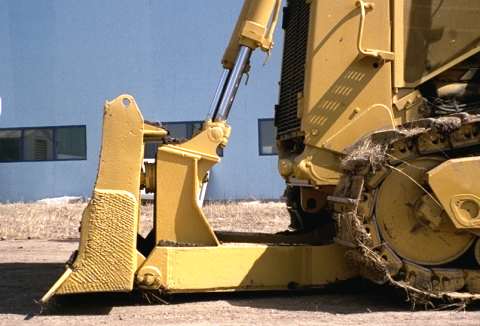Understanding Dozer Blade Types
Dozer Type and Description |
Image |
|---|---|
|
ANGLE DOZER: Angle Dozers work best handling broken and granular materials, soils, and gravel. The moldboard pivots about its center point to cast materials left or right. Ideal for making windrows, digging drainage ditches, backfilling trenches grading roads. This is a good all-purpose blade, especially when equipped with Tilt Cylinders. |
|
|
STRAIGHT DOZER: Straight Blades can be made very strong, abrasion-resistant, and puncture-resistant for moving large, sharp, and abrasive objects. They are not well suited to handling granular materials since these materials spill off the ends during long pushes. Straight Dozers are able to Tilt when equipped with one Tilt Cylinder and Tilt and Tip when equipped with two. |
|
|
SEMI-U BLADE: Built much like a Straight Blade but with a deeper profile and closed ends to help keep granular materials in front for long pushes. Semi-U Blades can be built with good abrasion resistance for materials like gravel, and with puncture resistance for handling large angular pieces of rock. Semi-U Blades are able to Tilt when equipped with one Tilt Cylinder and Tilt and Tip when equipped with two. |
|
|
U-BLADE: These blades are designed to push large quantities of granular materials over long distances. They are best suited for loose loads; coal, woodchips, and overburden, which are evenly distributed across the face of the moldboard. They are not well suited to handling large angular objects such as blast rock. U-Blades are able to Tilt when equipped with one Tilt Cylinder and Tilt and Tip when equipped with two. |
|
|
CUSHION DOZER: Cushion Dozers are not available as a moldboard only. They are always part of a special dozer group which is made predominantly for pushing other Dozers and Self Loading Scrapers when a more tractive effort is required. The dozer moldboard is hinge-mounted to a special inside push beam. Resilient pads or some other form of cushioning material absorbs shock loads when the blade comes in contact with the tractor to be pushed.
|
No illustration is available. Instead we offer this photo to explain the principles involved. |





